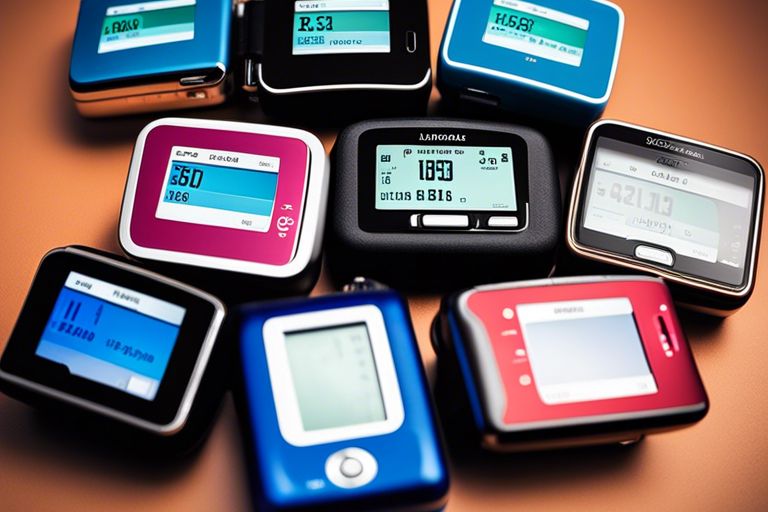Type 1 diabetes is a chronic autoimmune disorder that affects millions of people worldwide. Currently, there is no cure for type 1 diabetes, and treatment mainly involves insulin therapy, lifestyle modifications, and regular monitoring of blood glucose levels. However, with advances in medical technology and research, the future of type 1 diabetes treatment looks promising. In this article, we will explore some of the latest innovations and advancements in the field of type 1 diabetes treatment.
Continuous Glucose Monitoring
Continuous glucose monitoring (CGM) is a technology that has revolutionized diabetes care. CGM allows for the continuous monitoring of glucose levels in real-time using a sensor placed under the skin. This technology enables people with type 1 diabetes to monitor their glucose levels and make necessary adjustments to their insulin therapy and diet. The future of CGM technology looks promising, with advancements in accuracy, wearability, and affordability.
Artificial Pancreas
The artificial pancreas is a device that combines a CGM and an insulin pump to automatically adjust insulin delivery based on glucose levels. This technology aims to mimic the function of a healthy pancreas, which produces insulin in response to glucose levels. The artificial pancreas is already in use in some countries and is undergoing clinical trials in others. The future of the artificial pancreas looks promising, with advancements in accuracy and ease of use.
Gene Therapy
Gene therapy is a promising approach for treating type 1 diabetes. The goal of gene therapy is to replace or repair the genes responsible for the development of diabetes. This approach involves the delivery of healthy genes into the body using a viral vector. Gene therapy is still in the early stages of development, but the future looks promising.
Islet Cell Transplantation
Islet cell transplantation involves the transplantation of insulin-producing cells from a donor pancreas into the recipient’s liver. This approach aims to restore the body’s ability to produce insulin. Islet cell transplantation is already in use in some countries and is undergoing clinical trials in others. The future of islet cell transplantation looks promising, with advancements in donor availability and transplantation techniques.
Stem Cell Therapy
Stem cell therapy is a promising approach for treating type 1 diabetes. This approach involves the transplantation of stem cells into the pancreas to regenerate insulin-producing cells. Stem cell therapy is still in the early stages of development, but the future looks promising.
Immunotherapy
Immunotherapy is a promising approach for treating type 1 diabetes. This approach involves modulating the immune system to prevent the destruction of insulin-producing cells. Immunotherapy is still in the early stages of development, but the future looks promising.
Conclusion
In conclusion, the future of type 1 diabetes treatment looks promising with advancements in medical technology and research. Continuous glucose monitoring, artificial pancreas, gene therapy, islet cell transplantation, stem cell therapy, and immunotherapy are some of the latest innovations and advancements in the field of type 1 diabetes treatment. As we move forward, we can hope for a cure for type 1 diabetes.
FAQs
1. What is type 1 diabetes?
Type 1 diabetes is a chronic autoimmune disorder that affects the body’s ability to produce insulin.
2. What is continuous glucose monitoring?
Continuous glucose monitoring (CGM) is a technology that allows for the continuous monitoring of glucose levels in real-time using a sensor placed under the skin.
3. What is an artificial pancreas?
An artificial pancreas is a device that combines a CGM and an insulin pump to automatically adjust insulin delivery based on glucose levels.
4. What is gene therapy?
Gene therapy is a promising approach for treating type 1 diabetes. The goal of gene therapy is to replace or repair the genes responsible for the development of diabetes. This approach involves the delivery of healthy genes into the body using a viral vector. Gene therapy is still in the early stages of development, but it shows great potential for a cure for type 1 diabetes.
5. What is islet cell transplantation?
Islet cell transplantation involves the transplantation of insulin-producing cells from a donor pancreas into the recipient’s liver. This approach aims to restore the body’s ability to produce insulin. Islet cell transplantation is already in use in some countries and is undergoing clinical trials in others. It shows great potential for a cure for type 1 diabetes.
6. What is stem cell therapy?
Stem cell therapy is a promising approach for treating type 1 diabetes. This approach involves the transplantation of stem cells into the pancreas to regenerate insulin-producing cells. Stem cell therapy is still in the early stages of development, but it shows great potential for a cure for type 1 diabetes.
7. What is immunotherapy?
Immunotherapy is a promising approach for treating type 1 diabetes. This approach involves modulating the immune system to prevent the destruction of insulin-producing cells. Immunotherapy is still in the early stages of development, but it shows great potential for a cure for type 1 diabetes.
8. When can we expect a cure for type 1 diabetes?
There is currently no timeline for a cure for type 1 diabetes, but with the advancements in medical technology and research, we can hope for a cure in the near future.
Overall, the future of type 1 diabetes treatment looks promising with these advancements and innovations. People with type 1 diabetes can have hope for a cure and better quality of life in the future.




